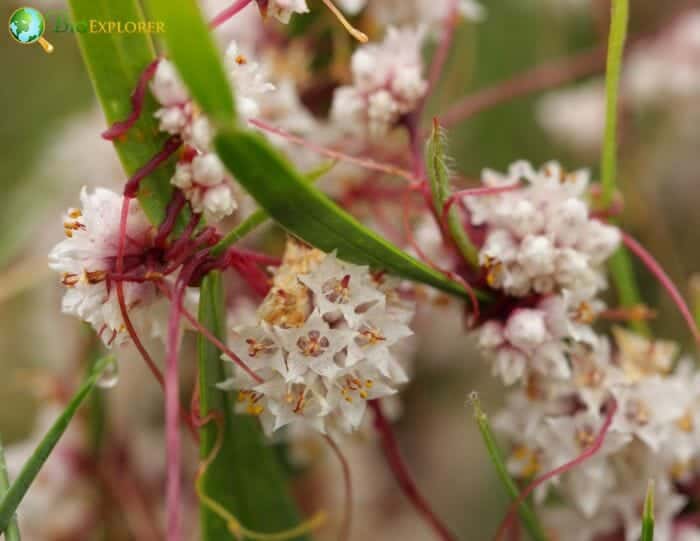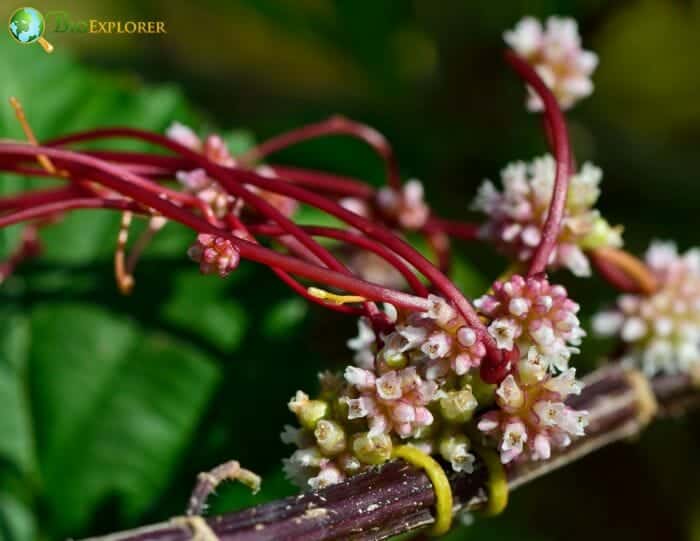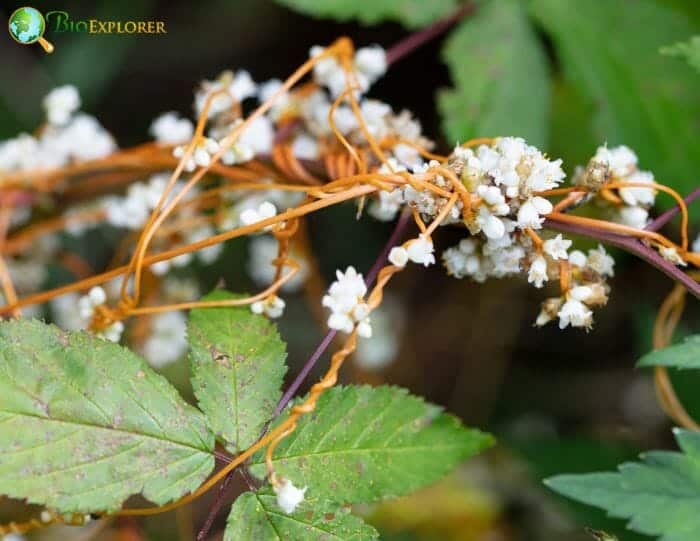
Dodder (Cuscuta cephalanthi) belongs to a genus of over 200 species[1] of obligate air-parasitic plants in the Convolvulaceae family. The genus is found in all tropical to temperate regions, with the most incredible biodiversity of species in the tropics and subtropics.

Dodder’s unique appearance comprises primarily bare, orange, or yellow, leafless stems and tendrils with tiny scales instead of leaves. Dodder has been given many familiar names to indicate its slim appearance: witch’s hair, strangle weed, lady’s laces, hairweed, goldthread, devil’s ringlet, devil’s hair, angel hair, and many more.

Usually, the tangled stems are orange in hue. Still, they can also be greenish, whitish, or yellowish, or even purple or red in color.

A dodder plant looks like a thick yellow thread tangled in undergrowth. Many of them crawl through the bushes to form blankets that look like tons of wet Excelsiors.
The slender, scale-like leaves are nearly invisible, while the numerous small, waxy, creamy petal clusters of 5 flowers followed by 1/8-inch pods are more noticeable. Dodder flowers appear in greenish-yellow or white clusters.












